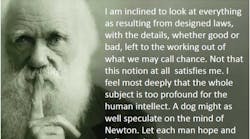Consider some of the transitions we face as an industry:
- Increasing the utilization of the real-time, cloud-based and/or mobile data, while investing to meet cyber security and physical security compliance requirements, and bridging IT / OT divides;
- Engaging with end-use customers for fuller realization of the promises of smart utility initiatives;
- Getting the most out of aging assets in a low growth or low margin business climate while meeting the demands of risk-averse regulatory authorities, shareholders, and stakeholders.
How can we fill in the missing links in the current value chains, and get from where we are to where we need to be, before all the functional elements, business models, or value drivers of new value chains are up and running?
A practical answer involves improving our key relationships: Smart utilities have smart employees and smart partnerships. These two themes—employees and partnerships--will be emphasized in our ongoing installments from our Smart Utilities Center of Excellence.
A theoretical answer is important too, and it involves our pondering what may seem to be an unanswerable question about system components and how they evolve--but it is a question we can apply to any complex system. Greater minds than ours have addressed it. (E.g. if you think about the design of the human eye and its key components—the retina, optic nerve, and pupil—the idea that the parts could have evolved prior to the “final” overall design being realized seems impossible, but it obviously was not impossible, as we see.)We can take comfort in the fact that “Mr. Evolution” was plagued by the same type of question--Charles Darwin himself was not satisfied with his “notion” about how complex system designs evolved by way of “the working out of what we may call chance.”
We can also take comfort in the fact that evolution is preferable to revolution--the lights do tend to stay on when revolutions are avoided! So smart utilities’ evolution should be embraced, and fostered. And initiatives (such as the NY REV--NY Reforming the Energy Vision) promoting development of new market mechanisms along with new technologies, are helping us rise to these challenges.



